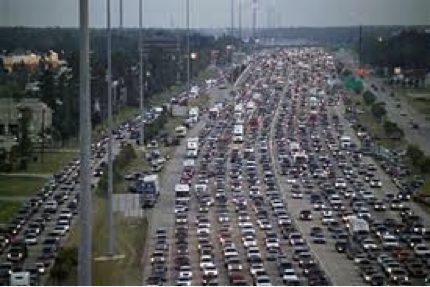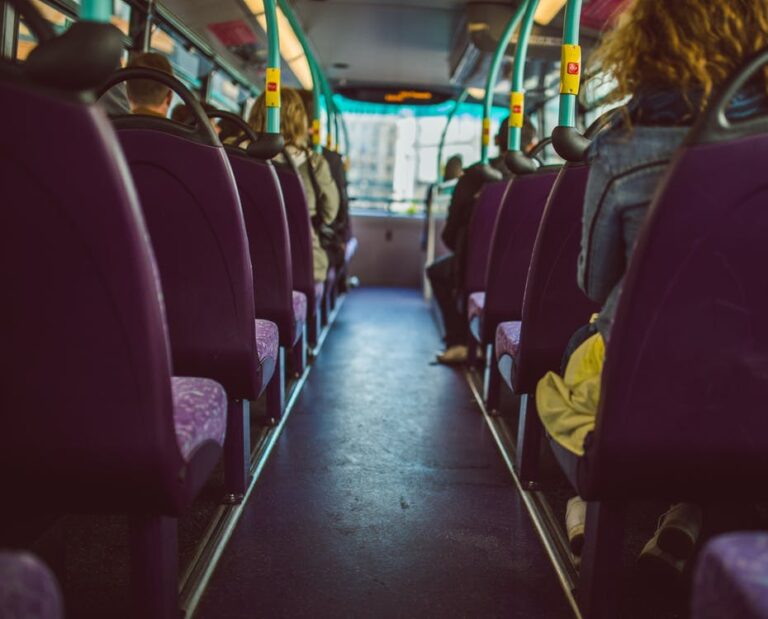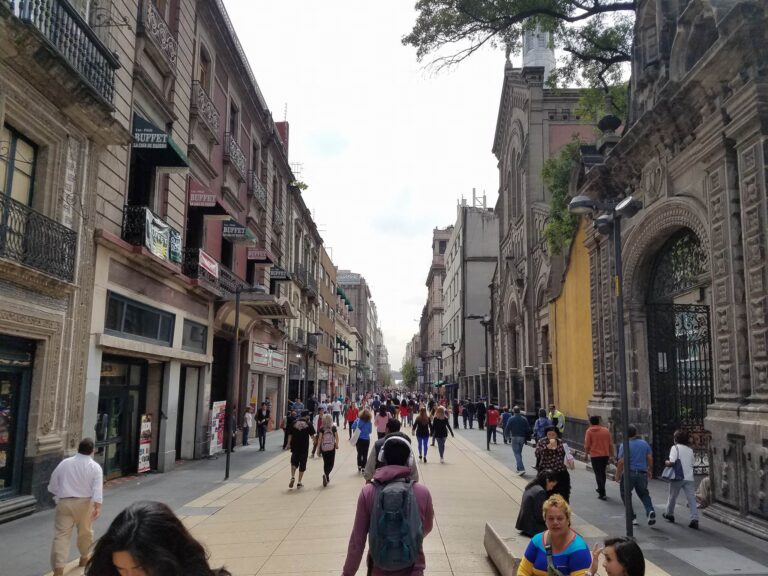Physical Address
304 North Cardinal St.
Dorchester Center, MA 02124
Physical Address
304 North Cardinal St.
Dorchester Center, MA 02124
I just read a 2018 book by a variety of authors (most notably Jonathan Levine, author of Zoned Out), From Mobility to Accessibility: Transforming Urban Transportation and Land Use Planning. The key point of the book is that rather than focusing solely on “mobility”, planners should focus on “accessibility”. What’s the difference? The authors describe mobility as speed or the absence of congestion; thus, a new highway that saves suburban commuters a few seconds increases mobility. “Accessibility” means making it easy for people to reach as many major destinations as possible, regardless of the mode of transport. For example, allowing more housing near downtowns and other urban job centers increases accessibility because it makes it easier for more people to live near work. However, residents of these neighborhoods might oppose such housing based on concerns about mobility; that is, they might fear that new neighbors might reduce mobility by increasing traffic. Obviously, an emphasis on increasing accessibility favors more compact development: people benefit from living closer to work, even if they are not driving 80 miles an hour. It also seems to me that the emphasis on accessibility favors more market-oriented land use policies; in the absence of government control, landowners will naturally want to increase accessibility by building housing near job centers and vice versa.

During an urbanist twitter free-for-all last week, the thoroughly awesome term “liberty machines” was used to describe the virtues of the car. The claim was made that cars let individuals go wherever they want, whenever they want and are therefore a ‘freedom enhancing’ form of transit. This isn’t the first time I’ve heard this argument in libertarian(ish) circles. But it doesn’t tally with my experience and I’m not sure it makes any sense even within its own premise. A Personal Anecdote and a Couple Thoughts When I learned to drive way back when, it was in the great state of Texas where driving is basically a necessity. In that context, getting my license (and being economically fortunate enough to have access to a car) was certainly liberating for me after a fashion. Thinking back, though, I enjoyed far less mobility as a car bound teenager in suburban Houston than I do now living in Oakland, California. I walk to the grocery, take BART to work, bike to the gym, catch a Lyft to go out, and/or drive myself when the occasion demands. Most of my trips are multimodal and the integration of transit modes affords me far more freedom of movement than car use alone ever could. The biggest reason for this is that single occupancy vehicle use doesn’t scale as a stand alone system. Unpriced roadways are prone to hitting congestion points and, as readers of this blog are probably aware, adding lanes doesn’t help. When roads become clogged, and there are no viable alternatives, a reliance on cars becomes a constraint. And to respond to the idea that mass transit relies on government subsidies and car use does not…the technical term for that would be factually incorrect. Mass transit is more than capable of paying for itself and let’s just say highways don’t […]

At 4:30 am, alarms on my cellphone and tablet start beeping, just enough out of sync to prompt me to get up and turn them off. By 5:00 am, I riding as a passenger along an unusually sedate New Jersey Turnpike, making friendly conversation with my driver and survey partner to make sure he stays awake. At 5:30am, as most of the city sleeps, we find a drab concrete picnic table outside the bus depot and chow down on our cold, prepared breakfasts. Around us, buses are revving up and their drivers are chatting and smoking cigarettes. At 5:50 am, we find our bus and introduce ourselves to our driver for the day. All of the Alliance drivers seem to be Hispanic. Our run begins. You wouldn’t expect it, but the first run is always the sweetest. The riders trickle on, making it easy to approach them, and unlike the typical 8:00 am rush hour rider they are usually friendly and receptive to my request. I approach them and mechanically incant “Good morning Sir/Ma’am. Would you like to take a survey on your commute today for NJ Transit? It will only take a few minutes of your time.” My partner sits in the front, tallying the boardings, exits, and survey refusals. We will spend the next eight hours zigzagging across the New York City metropolitan area, asking harried riders about their commute. For the past month or so, this has been my part-time job: surveying bus riders about their origins, destinations, and travel preferences for NJ Transit. The job is just engaging enough that I rarely have time for sleeping or class readings, but has enough slow periods that my mind can wander on the question of bus planning. Although I am not authorized to read any of the surveys […]

This piece was coauthored by Nolan Gray and Katarina Hall. It’s like Los Angeles, but worse. To many, that’s the mental image of Mexico City: a city of unending traffic, unbearable smog, and unrestrained horizontal expansion. Yet when one walks the streets of Mexico City, a distinct reality comes into view: a city of wide sidewalks and integrated bike lanes, lush parks and cool street tree canopies, and dense, mixed-use urban neighborhoods. As a matter of fact, nearly every neighborhood within Mexico City’s giant ring road—the Circuito Interior—has a walkscore above 95. Many major U.S. cities lack even one neighborhood with such a high score. Even on the outer fringe of Mexico’s sprawling Distrito Federal, neighborhoods often have walkscores upwards of 70, qualifying as “very walkable.” What makes Mexico City so walkable? The first thing an American might notice about Mexico City is just how busy the city’s sidewalks are. It’s a city of 21,339,781, and it shows. But this busyness isn’t a mere side-effect of size; it’s a natural result of the city’s generous sidewalks and high-quality pedestrian infrastructure. Many downtown roads host spacious sidewalks, accommodating an unending sidewalk ballet of commuters, tourists, and street vendors. Wide medians along major boulevards offer both refuge for crossing pedestrians and a public space in which people are encouraged to meet and relax. Many of the city’s busiest downtown areas have been closed to automobile traffic. Mexico City’s main road—Paseo de la Reforma—is reserved on Sundays for pedestrians and cyclists. “Jaywalking” is normal and in many cases is assisted by traffic police—a stark contrast to the near persecution pedestrians often face in U.S. cities. The ample space for pedestrians attracts not only foot traffic but also the people watchers who come to enjoy the vitality, in turn keeping many downtown […]
1. Where’s Scott? Scott Beyer spent his second week in the Oklahoma City area, finding a place in the relatively wealthy northern college suburb of Edmond, OK. This week he wrote for Governing about New Orleans‘ music noise issue, and profiled a man in Forbes who escaped Cuba by raft for Miami. There are over 1.1 million Cuban immigrants in the United States, and even more than other immigrant groups, they have clustered, with over two-thirds living in greater Miami. What unites this group is not dislike of their home country, but the need to leave the Castro brothers’ Communist regime. 2. At the Market Urbanism Facebook Group: Nolan Gray found another great Daniel Hertz article: Great neighborhoods don’t have to be illegal—they’re not elsewhere John Morris shared Donald Shoup‘s contribution to a Washington Post series on cities becoming less car-dependent (h/t Nolan Gray) John Morris also found a post at Medium calling for repeal of segregationist zoning policies Jeff Fong shared a short podcast interview with Alain Betaud Sandy Ikeda shared Bill Easterly‘s research on the largely unplanned emergence over 400 years of single block in Soho Mark Frasier congratulates Zach Caceras‘ work seeding local reforms at Startup Cities Adam Lang‘s ongoing frustration with urban renewal in his Philadelphia neighborhood which we previously covered 3. Elsewhere: New Geography reposted Nolan Gray’s recent article on Jane Jacob’s Hayekian approach William Fischel will be speaking Tuesday at NYU about his new paper: The Rise of the Homevoters: How OPEC and Earth Day Created Growth-Control Zoning that Derailed the Growth Machine Chris Hagan‘s WBEZ radio piece about population loss in Chicago‘s North Center neighborhood due to restrictive zoning Nick Zaiac wrote Maryland Is an Over-Regulated Disaster: Here’s How to Fix It and published a report at The Maryland Public Policy Institute Commutes in the U.S. are getting longer, reports the Washington Post’s Wonkblog. 4. Stephen […]

California might have some competition in the race for high-speed rail. Texas Central Railway wants to begin construction on a high-speed line from Dallas to Houston as early as 2017. The current plan is to go from downtown to downtown, with possibly one stop along the way in College Station. An environmental impact assessment is under way and the hope is to be operational by 2021. The company claims that the price per ticket will be competitive with airfare and that the run will take a mere 90 minutes. To give that some context, current travel time from Houston to Dallas by car is about 3.5 hours according to Google (but closer to 4.5 according to my prior experience). While there’s a lot to be skeptical about here, the impact of connecting the nation’s 4th and 6th largest urban economies could be significant. If a high-speed line does get built and if it does manage to deliver on its specs (two major “ifs” already), it would be the equivalent of a magic portal…or a stargate…or a warp pipe…or a tesseract…or…well…the point being it would make the two places functionally much closer together, and that’s a big deal. Cities become economically vibrant through agglomeration. Bringing people closer together lowers search costs for both employers and employees. It also increases the likelihood of “creative collisions”. What high-speed rail could do is combine the benefits of agglomeration that each of these two cities already enjoy. And, as early in the day as it is, there’s already speculation that a line connecting Dallas and Houston would be a precursor to additional lines connecting all four of the state’s pillars of civilization: Dallas, Houston, San Antonio, and Austin. The unbridled optimist in me imagines high-speed rail as the embryonic bones of a future mega-city encompassing […]
Maybe the delay in posts led you to believe the Rothbard Series was complete. The good news is that there are a few more posts to go, and the ones coming up next should be the most interesting to urbanists. If you haven’t kept up with our discussion, Murray Rothbard’s classic For A New Liberty can be downloaded free from Mises.org as pdf, web page, and audio book read by Jeff Riggenbach, and you can read the first five posts: Rothbard the Urbanist Part 1: Public Education’s Role in Sprawl and Exclusion Rothbard the Urbanist Part 2: Safe Streets Rothbard the Urbanist Part 3: Prevention of Blockades Rothbard the Urbanist Part 4: Policing Rothbard the Urbanist Part 5: Diversity and Discrimination Not long ago, I posted a video from a friend showing one traffic intersection in Cambodia that appears to function well without any signaling. Here are some other resources on the emergent order of traffic without signals: Econtalk podcast with Mike Munger on Cultural Norms Cafe Hayek: The arc of emergent order and Traffic without Traffic Signals. Kids Prefer Cheese: Movie from atop the Arc Tom Vanderbilt: News for Traffic Signal Manufacturers Infrastructurist on the Dutch City of Drachten I caught some flak from a commenter who considered it “disingenuous” to present the video of the intersection as evidence “of a workable intersection.” Of course I had to remind the commenter that I don’t consider these types of intersection something that I advocate as a “free market” solution: Don’t mistake me as an advocate of a world without traffic signals. I am quite certain that some sort of traffic signaling would likely emerge from a free-market street system. But, my bigger point is that when information is dispersed widely among decision-makers without government monopoly, sustainable solutions emerge from the […]
I probably won’t make any friends today, but now I’ve read one too many urbanist (many who’s ideas I usually respect) use unsound logic to support high speed rail. This argument often includes something like this: “…and furthermore, highways and airports don’t come close to paying for themselves, therefore high speed rail need not meet that hurdle either.” Here’s some examples of the typical contradiction many usually-reasonable urbanists are making when arguing for high speed rail- Ryan Avent in an article plagued with this pseudo-logic: Government is going to build more capacity. Given that, what is likely to be the best investment, all things considered? Available alternatives, as it turns out, are not all that attractive. Roads do not appear to pay for themselves any more than railways do. Receipts from the federal gas tax come close to covering federal highway expenditures, but gas is used on highways and non-highways alike, indicating that at the federal level, highways are subsidized. and: I respect Mr Cowen very much, but I think it’s long past time we stopped listening to libertarians on the issue of whether or not to build high-speed rail. Who will ask whether road construction remotely passes any of the tests they’re so prepared to push on rail? And if we begin charging an appropriate fee on drivers to maintain existing roads and reduce congestion, what do they all think will happen to land use patterns and transportation mode share? Some have emailed to ask me why I dislike Randal O’Toole so much. The main reason is because people like Avent will always be able to point to the government highway-lover from CATO and rashly proclaim all libertarians have forever lost credibility when it comes to transportation and land use. Of course, Avent’s narrow-mindedness on this topic deserves contempt […]
Mathieu Helie at Emergent Urbanism posted a link to a interesting game created at the University of Minnesota. Mathieu explains it better than I can: The game begins in the Stalinian Central Bureau of Traffic Control, where a wrinkly old man pulls you out of your job at the mail room to come save the traffic control system. You are brought to a space command-like control room and put to work setting traffic lights to stop and go. Meanwhile frustrated drivers stuck in the gridlock you create blare their car horns to get your attention, and if their “frustration level” rises too high you fail out of the level. As the road network gets as complicated as four intersections on a square grid, the traffic becomes completely overwhelming and failure is inevitable, but the old man reassures you that they too have failed anyway. OK, you’ve played the game? If not, don’t go further until you have. Now that you’ve played the game and failed to control traffic, compare that top-down system with this amazing video a friend sent to me from Cambodia. You’ve gotta see this: Man, I love this video! I must have watched it a couple dozen times. I keep expecting a crash, in what to me (only being familiar with top-down planned traffic systems) looks like complete chaos. Yet pedestrians, bikes, motorcycles, scooters, rickshaws, and cars all make it to their destinations safely, and probably quicker than in the system in the game above. It must be similar to how capitalism must seem chaotic to people who have always lived in planned economies. Don’t mistake me as an advocate of a world without traffic signals. I am quite certain that some sort of traffic signaling would likely emerge from a free-market street system. But, my bigger […]
At Streetsblog, Ryan Avent presented a scorching attack on the most notorious free-market impostor – Randal O’Toole: Taking Liberties With the Facts for his consistent hypocrisy: The Cato Institute’s Randal O’Toole gets under the skin of many of those interested in building a more rational and green metropolitan geography, but in many ways he’s an ideal opponent. It would be difficult to concoct more transparently foolish arguments than his. The man is an engine of self-parody. The requisite identification of “libertarian” contradictions: This is one thing I’ve never understood about the libertarian love affair with highways; they seem utterly blind to the fact that it has required and continues to require massive government action to build and maintain the road network. The interstate highway system is perhaps the single largest government intervention in the economy in the 20th century. Reading O’Toole you’d think it was a wonder of the free market. And with ease, Ryan points out the data needed to take O’Toole to task on his persistent assertion the “roads pay for themselves”: The source of his blindness on the issue seems to be due to his belief that roads pay for themselves, and that congestion exists only because governments shift gas tax revenue to pay for transit and other smart growth projects. Nothing could be farther from the truth. In the first place, gas tax revenue comes nowhere near paying for roads. Federal gasoline tax revenues cover barely half of the annual budget of the Federal Highway Administration. Add in diesel tax revenues and you’re still short. And that’s just the federal budget picture. In response, Randal replies to critics in the comments of his latest post of his “Antiplanner” blog: The Antiplanner sees the American dream as freedom of lifestyle choices and opportunities to realize those choices […]